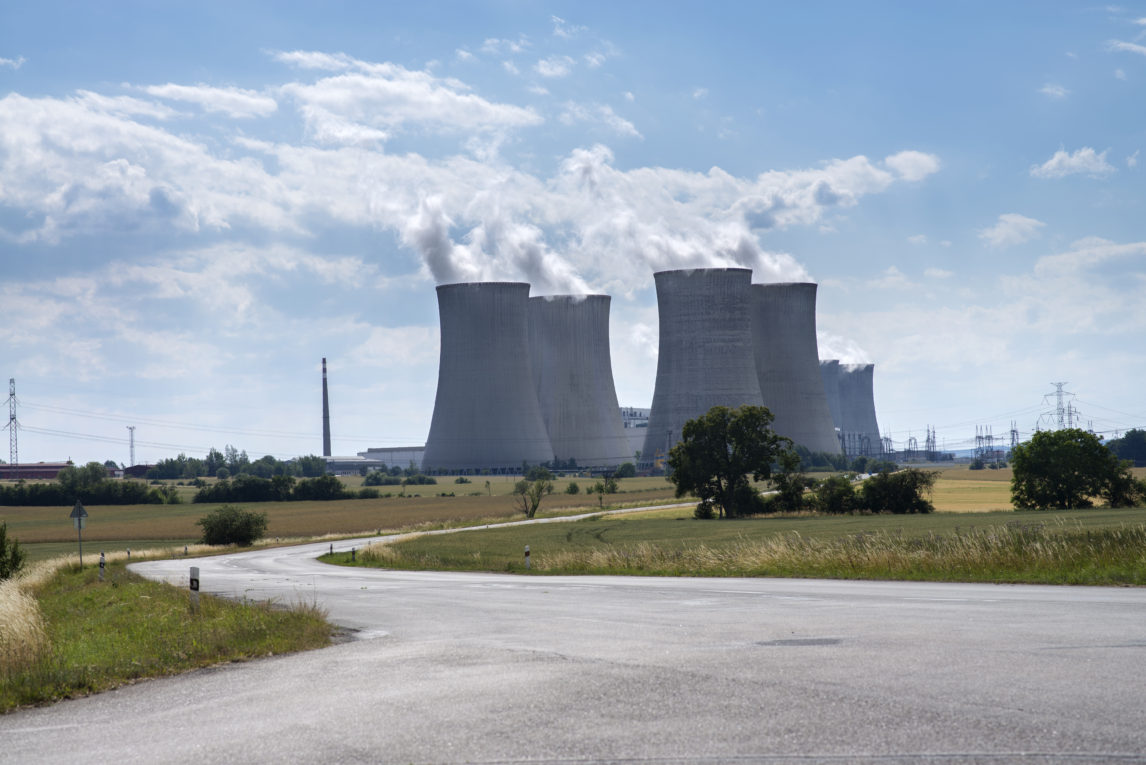For Immediate Release
March 29, 2012
NRC decides not to suspend FitzPatrick operations during petition review process;
AGREE criticizes NRC for failing to prioritize public safety from immediate nuclear risk
Contact:
Jessica Azulay, AGREE, (315) 480-1515
Paul Gunter, Beyond Nuclear, 301-523-0201
The Nuclear Regulatory Commission (NRC) has refused to take immediate action to suspend power operations at the James A. FitzPatrick nuclear power plant in Scriba, New York, even though the federal agency’s own inspection report has determined that the reactor is operating with “an apparent beyond design and licensing basis vulnerability” for containment failure in the event of a severe accident.
The NRC informed the Alliance for a Green Economy (AGREE) Tuesday of its March 20, 2012 decision to deny the group’s request for the immediate suspension of power operations at Entergy’s Fukushima-design GE Mark I Boiling Water Reactor. The NRC decision allows the power reactor to continue operating while the federal agency reviews the group’s request for hearings on the undue risks that nuclear operations with this design vulnerability impose on the public’s health and safety. The NRC thus far has failed to provide the group a written rationale for its decision, which was made behind closed doors.
“NRC needs to prove that it is looking out for the public’s safety first, and not just Entergy’s profits,” said Tim Judson, of CNY- Citizens Awareness Network, a founding member of AGREE. “Fukushima proved that FitzPatrick is certain to fail in an accident, with devastating consequences to our communities. If that’s not an immediate safety risk, I don’t know what is. We call on NRC to prove why risking explosions and radiation releases is not unsafe, or shut the plant down.”
On March 9, 2012, AGREE, a statewide alliance, and Beyond Nuclear, a national watchdog organization, jointly filed a petition to the NRC documenting that the FitzPatrick operator had refused to install a “hardened vent system” as requested by the agency in 1989. Such a vent was installed on every other Mark I reactor in the United States. The groups are asking for the immediate suspension of operations at the FitzPatrick reactor until there are public hearings and a harder look at safety. The basis for the petition is the plant’s unreliable Fukushima-design containment structure and the operator’s refusal to install the hardened vent, posing an unacceptable and severe health and safety risk to the public.
In the case of an accident at the plant, Entergy currently plans to relieve pressure on the vulnerable containment system through venting radiation, steam, and explosive gasses into a building until the internal pressure blows open the doors of the building, releasing a radiation cloud and explosive hydrogen gas to the outside at ground level. FitzPatrick’s operator argues it is “unlikely” any ignition sources would detonate an explosion.
“The NRC and Entergy are irrationally gambling on the probability that a nuclear accident won’t happen in this acknowledged vulnerable containment system,” said Paul Gunter, Director of Reactor Oversight at Beyond Nuclear, based in Takoma Park, MD. “We want a prompt and transparent review of the known vulnerabilities and faulty assumptions that make the day-to-day operation of this nuclear reactor an unacceptable risk.”
The groups have formally charged that the FitzPatrick severe accident plan poses an unacceptable risk to Entergy workers and to the public. The unreliable Mark I containment system and FitzPatrick’s unique refusal to install a “hardened vent” increase the probability of massive radiation releases and exposures to workers, the surrounding communities and the environment. A 1980 NRC-commissioned study estimated that the consequences of a severe nuclear accident at FitzPatrick would be devastating to Central New York: 1,000 deaths from severe radiation exposure; 16,000 people hospitalized with radiation sickness; 17,000 long-term cancer deaths; and $100 billion (2011 $US) in property losses.
In 1992, the NRC accepted the Fitzpatrick operator’s refusal to install the hardened vent on the Mark I containment, saving the operator $680,000. At the time, the FitzPatrick operator, then the Public Authority of the State of New York (NYPA), said that the ignition of hydrogen gas was unlikely.
But that thinking apparently changed after the Fukushima nuclear disaster. In a post-Fukushima inspection report, dated May 13, 2011, both the NRC and Entergy acknowledge “an apparent beyond design and licensing basis vulnerability, in that current procedures do not address hydrogen considerations during primary containment venting.” Earlier this month, the NRC ordered all Mark I reactors to install a “reliable” vent by 2016.
“The NRC and Entergy know this venting plan is not safe, yet, instead of addressing the concern immediately, they seem fine to wait and just hope there isn’t a serious accident at the plant,” said Jessica Maxwell, a staff organizer with the Syracuse Peace Council, which is a founding member of AGREE. “We are not fine to wait while the NRC and Entergy drag their feet,” Maxwell continued. “If the NRC will not protect the public from a known vulnerability, then there is something seriously wrong with the agency.”
In mid-April, members of AGREE and other co-petitioners will continue to pressure the NRC to act on the safety vulnerabilities at Fitzpatrick. As the petition is still under consideration by the NRC, the petitioners have been invited to address the NRC Petition Review Board in a public meeting in Washington, DC.
—30—
Alliance for a Green Economy (AGREE) works for safe, affordable energy and the development of a green economy in New York State. Our goal is a prosperous, safe, and healthy New York, fulfilling the promise of conservation, energy efficiency, and safe, clean renewable energy sources to end our state’s reliance on wasteful and environmentally destructive forms of energy. The Alliance works to promote this transition to a carbon-free and nuclear-free future and educates the public about alternatives that can revitalize the economy and safeguard human health and the environment. Organizational members of AGREE include the Center for Health, Environment & Justice, the Citizens’ Environmental Coalition, Peace Action New York State, Peace Action CNY, the CNY chapter of Citizens Awareness Network, and the Syracuse Peace Council.
Beyond Nuclear aims to educate and activate the public about the connections between nuclear power and nuclear weapons and the need to abandon both to safeguard our future. Beyond Nuclear advocates for an energy future that is sustainable, benign and democratic.

